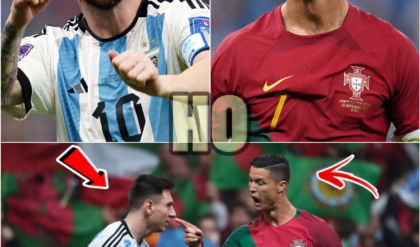/cdn.vox-cdn.com/uploads/chorus_image/image/73200126/2068301597.0.jpg)
A huge reason why the Golden State Warriors struggled to generate offense against the San Antonio Spurs two days ago was due to the clunky offense. You can point to two things as the culprit behind it: 1) a starting lineup that had three non-spacers (Trayce Jackson-Davis, Draymond Green, and Jonathan Kuminga) and two ball-handlers in both guard spots (Chris Paul and Brandin Podziemski); 2) settling for stagnant isolation possessions that did little to shift the Spurs’ defense around and made their jobs easier in terms of getting stops.
Despite the absence of Steph Curry — the unquestioned engine of this offense who makes life a heck of a lot easier on that end — the Warriors needed to stick to their identity of constant ball and player movement against a team that has struggled to defend this season, especially without their best defender in Victor Wembanyama. They finally were able to muster a semblance of good offense in the second half of that meeting — but other problems surfaced, especially on the defensive end.
So it was quite telling that Steve Kerr decided to move away from the starting lineup that not only shrank the floor in half-court situations — it also didn’t have a bona fide scoring option that could relieve some of the spacing and shot-creation problems. He shelved Podziemski and started Klay Thompson in his place, while relegating Jackson-Davis to the bench and putting Andrew Wiggins back in as a starter. Green shifted over to the five in the Warriors’ classic small-ball configuration.
In theory, this lineup aimed to increase the pace, create more fastbreak situations, and maximize opportunities to catch the Spurs on their heels. Forcing stops would be crucial — it allowed the Warriors to immediately trigger the break and take advantage of a team scrambling to get back and set their half-court defense.
Even off of made buckets, the mobile nature of the lineup allowed them to quickly push the pace and get to the other end — before a generational defender could get back to wall off the paint:
But while pace and lineup mobility played a non-insignificant part in the Warriors’ offense getting more traction this time around, arguably the main reason behind the rejuvenation was emphasizing actions that forced the Spurs to have to defend — as aforementioned, something the Warriors had to adjust to doing in their previous meeting but at a point where it was too little, too late.
Part of the reason why Kerr decided to start Jackson-Davis the last time around was to take advantage of his synergy with Paul on ballscreen actions. Without the presence of a high-level shot creator, the next best options on paper were the following:
-
Using Thompson’s gravity off the ball to generate advantages on movement sets.
Running ballscreen sets for Paul to get him to his spots and put pressure on the Spurs’ pick-and-roll defense.
Kerr’s ability to draw up plays off of stoppages and after timeouts is an underrated and understated part of his coaching. He typically uses Curry as a decoy/screener of sorts on his drawn-up sets; without him, Thompson naturally slots into the combo role of advantage generator, shot creator, and decoy/screener.
In “Delay” action below (where the floor is inverted and Green is placed in the role of the passer at the top of the key) — initiated by a wing handoff before the ball finds its way to Green in order to shift the defense and keep them on their heels — Thompson comes off a pindown, followed by receiving the ball from Green on a dribble handoff (collectively called “Chicago” action).
The force and pace of the action is what fuels the play. Thompson’s defender scrambles to chase him, while Wembanyama can’t commit to help due to having to keep tabs on the roll by Green. This allows Thompson to gain separation against his scrambling defender — and allows him to create space for a mid-range jumper:
On another set — this time, a baseline out-of-bounds (BLOB) possession — Kerr tweaks a play called “Rub” for Thompson, who inbounds the ball, receives a baseline screen, and “zipper” cuts his way toward the top of the arc. He comes off a screen by Kuminga, who takes advantage of the attention Thompson gets to slip and cut his way toward the rim for an easy dunk:
The other method the Warriors used to put pressure on the Spurs’ defense — ballscreen actions with Paul as the ballhandler — also stood out.
Kerr previously stated a desire to incorporate more actions that Paul liked to run. Throughout this season, Paul has shown a particular preference for two specific ballscreen concepts:
-
“Stack/Spain” pick-and-roll
“Pistol/21” action
With Wembanyama back to anchor the Spurs’ defense, there was a need for the Warriors to scheme him away from half-court actions as much as possible, with a particular focus on Wembanyama’s base drop coverage.
The first Paul-preferred action listed above — “Stack” pick-and-roll, or more popularly known as “Spain” pick-and-roll — is specifically designed to counter drop coverage. Paul calls for “Stack” by literally stacking his fists together. This triggers the typical ballscreen action, with the addition of a backscreen by Podziemski on Wembanyama, which allows Paul to come off the ballscreen and get to his elbow sweet spot.
The Spurs try to switch the action, but Paul gets enough space and time to drill a vintage mid-range jumper:
As for the second action — “Pistol,” also referred to as “21” — it involves ballscreen action on the wing. The particular “Pistol” variant Paul ran against the Spurs is “Nash” action, where the ball is passed to Paul on the wing. The passer follows his pass and sets a ballscreen for Paul, who then comes off another ballscreen set by the five in what is virtually a double-ballscreen set.
The passer who gets the ball to Paul on the wing and sets the first screen (Podziemski) is important in this setup:
Podziemski staying put after setting the screen forces his defender to stick to him, which eliminates a “tag” on Jackson-Davis’ roll. Add to the fact that Paul’s defender falls behind after being forced to navigate the screens, Zach Collins is then on an island, virtually defending a 2-on-1. This makes it easy for Paul to find Jackson-Davis on the alley-oop.
A typical way for defenses to defend double ballscreens is to switch the initial screen. On another “Nash”-action possession, the Spurs do try to switch onto Paul to take away the roll option — but the execution is shoddy. The switch is late, which allows Paul to step into his comfort zone and drill a mid-range jumper:
The emphasis on Paul-fueled ballscreen actions was prevalent and readily stood out — to the point where sets the Warriors don’t usually run made appearances.
This is one that you don’t see from them all that much, but one that other teams incorporate within their offense. Paul calls out “45”, which is the typical playcall for high “Horns” ballscreens. It involves two ballscreens facing each other — which gives the ballhandler two options to come off of.
Naturally, Paul chooses to come off the screen set by Jackson-Davis, which puts Wembanyama in the pick-and-roll action:
Jackson-Davis being able to catch Paul’s man on the screen forces Wembanyama to have to step up a tad higher — which also means the lob window for Paul to get the ball to Jackson-Davis opens up.
The Warriors’ offense without Curry is always going to be an adventure — but it doesn’t mean they should be completely inept without him. A slight change in approach, tailored to the personnel available, was all the Warriors needed to muster an offensive attack that should’ve been enough to overcome a bottom-tier team.
That change in approach came in the form of a healthy balance — that of sticking to their identity of ball/player movement and incorporating ballscreen action for a pick-and-roll maestro.
News
BREAKING: NFL Unanimously Votes In New Controversial Rule
(Photo by Ethan Miller/Getty Images) The NFL seems to be destined to ban the hip-drop tackle this week. The league office wants to ban a certain type of hip-drop tackle. The NFLPA disagrees. The owners voted on it. On Monday, it was…
Everyone Noticed The Same Strange Thing About This Year’s NFL Coaches Photo
Fans had questions after five NFL head coaches missed out on the league’s annual photo this week. Most of the coaches are in Orlando, Florida at the moment as the NFL annual owners meeting is taking place there. So they came together…
5 Most Overrated NFL Free Agent Signings Of 2024 So Far…And 5 Most Underrated That Are Flying Under The Radar
Now that most of the top 2024 NFL free agents are off the board, it’s a good time to look at which highly-anticipated signings are bound to disappoint — and which under-the-radar moves will pay more dividends than you think. So with…
Ranking The Craziest NFL Free Agent Deals Of All-Time From WORST To FIRST
Free agency completely changes the landscape of professional sports. When a player’s contract is up—he can go to any team and drastically alter the balance of power in the league. The NFL is no different. All it takes is one crazy deal…
BREAKING: AFC Super Bowl Contender Has Officially Made A Contract Offer To Odell Beckham Jr.
The Miami Dolphins have some interest in veteran playmaker, Odell Beckham Jr. Miami Dolphins coach Mike McDaniel spoke to reporters about the team’s early offseason at the NFL annual meeting Monday at the Ritz-Carlton Grande Lakes and informed everyone that the Dolphins and Odell Beckham Jr….
End of content
No more pages to load











 VICTORIA JUDICIAL de Ortega Cano y Gloria Camila a Kiko Jiménez y Sofía Suescun por Telecinco | HO
VICTORIA JUDICIAL de Ortega Cano y Gloria Camila a Kiko Jiménez y Sofía Suescun por Telecinco | HO